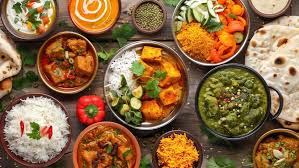
The Indian Council of Medical Research (ICMR) has recently issued a ground-breaking guideline that challenges traditional dietary habits. The new guideline emphasizes the importance of protein over carbohydrates in maintaining good health, especially for preventing chronic diseases. One of the biggest changes? Ditching white rice and switching to healthier grains that are richer in protein, fiber, and essential nutrients.
Here’s an in-depth look at why this guideline is a game-changer and how you can make healthier food choices to improve your well-being.
1. Why Focus on protein Over Carbs?
For decades, carbohydrates—especially refined ones like white rice—have been a staple in indian diets. However, the ICMR now emphasizes the need to prioritize protein as the building block of a healthy diet. Here's why:
· Protein is essential for muscle repair, immune function, and hormone production, whereas excessive carbs, especially refined ones, can lead to weight gain and increased risk of metabolic diseases.
· Refined carbs (like white rice, white bread, and sugary snacks) are low in nutrients and are digested quickly, leading to spikes in blood sugar levels. Over time, this can contribute to insulin resistance and other chronic conditions like diabetes and heart disease.
· On the other hand, protein-rich foods help keep you feeling full for longer, reduce hunger pangs, and support muscle health, making it easier to maintain a healthy weight.
2. Ditch White Rice: The Hidden Risks
White rice is a major dietary component in many indian households, but it has been linked to several health concerns when consumed in excess. The ICMR's new guidelines encourage reducing its intake due to the following reasons:
· High Glycemic Index: White rice has a high glycemic index (GI), meaning it raises blood sugar levels rapidly. This can contribute to the development of type 2 diabetes and obesity when consumed in large amounts.
· Low in Nutrients: White rice is essentially a refined carbohydrate that has been stripped of its bran and germ, which contain valuable nutrients like fiber, vitamins, and minerals.
· Increased Risk of Chronic Diseases: Excessive intake of refined carbs like white rice has been linked to cardiovascular diseases, diabetes, and metabolic syndrome.
3. The Shift to Healthier Grains: Which Ones Are Best?
Rather than white rice, the ICMR suggests incorporating healthier grains that are not only higher in protein but also packed with other vital nutrients. These grains offer fiber, vitamins, and minerals, contributing to overall health.
Here are some of the healthiest alternatives to white rice:
1. Brown Rice: The Nutritious Swap
· Benefits: Brown rice retains its bran and germ, making it a much better source of fiber, vitamins, and minerals. It has a lower glycemic index compared to white rice, which helps in better blood sugar control.
· Protein Content: Slightly higher than white rice, it provides around 4.5 grams of protein per cup of cooked rice.
2. Quinoa: The protein Powerhouse
· Benefits: Quinoa is a complete protein, meaning it contains all nine essential amino acids. It’s also rich in fiber, iron, and magnesium.
· Protein Content: Approximately 8 grams of protein per cooked cup, making it one of the best alternatives for anyone looking to increase their protein intake.
3. Millet: The Traditional Superfood
· Benefits: millets like foxtail millet, pearl millet, and barnyard millet are high in fiber and antioxidants. They have a much lower glycemic index than white rice, making them ideal for diabetes management.
· Protein Content: Around 6-7 grams of protein per cooked cup, depending on the type of millet.
4. Barley: A Heart-Healthy Choice
· Benefits: Barley is high in fiber and beta-glucans, which help lower cholesterol and improve heart health. It's also a great source of B-vitamins.
· Protein Content: About 3.5 grams of protein per cooked cup.
5. Amaranth: A Nutrient-Rich Ancient Grain
· Benefits: Amaranth is rich in protein, fiber, and essential minerals like calcium and iron. It also has a high antioxidant content.
· Protein Content: Around 9 grams of protein per cooked cup, making it an excellent choice for vegetarians.
4. Incorporating More protein into Your Diet
ICMR’s guideline to focus on protein is not just about choosing the right grains but also including a variety of protein-rich foods in your daily meals. Here are some suggestions:
· Legumes and Pulses: Lentils, chickpeas, kidney beans, and other pulses are fantastic sources of plant-based protein and are easily incorporated into daily meals.
· Dairy Products: Milk, yogurt, and paneer are excellent sources of protein, calcium, and vitamins.
· Nuts and Seeds: Almonds, walnuts, chia seeds, and pumpkin seeds are packed with healthy fats and protein.
· Eggs: A complete protein source, eggs are nutrient-dense and highly versatile.
· Lean Meats and Fish: If you're a non-vegetarian, chicken, turkey, and fish like salmon or tuna are great sources of high-quality protein.
5. Benefits of the New ICMR Guideline
By shifting focus from carbs to protein, this guideline offers several health benefits:
· Improved Weight Management: High-protein diets promote satiety, helping to control hunger and manage weight more effectively.
· Better Blood sugar Control: Reducing the intake of refined carbs and replacing them with healthier alternatives like whole grains and millets can help in controlling blood sugar levels.
· Reduced Risk of Chronic Diseases: With lower intake of refined carbs, you reduce the risk of heart disease, stroke, and metabolic disorders like diabetes.
· Better Digestive Health: High-fiber grains and protein-rich foods promote better gut health, reducing the risk of constipation and supporting overall digestion.
6. Conclusion: A Healthier, Balanced Diet
ICMR’s new guidelines offer a fresh perspective on diet and health, urging people to focus on protein-rich foods and healthier grain alternatives to white rice. While it’s not about eliminating carbs completely, the focus should be on reducing refined carbs and opting for whole grains that offer more nutrition and health benefits.
Adopting these changes may require a shift in your eating habits, but the long-term health benefits—like better blood sugar control, improved heart health, and effective weight management—are well worth it. So, it’s time to say goodbye to white rice and start embracing healthier, more protein-packed grains!
Disclaimer:
The views and opinions expressed in this article are those of the author and do not necessarily reflect the official policy or position of any agency, organization, employer, or company. All information provided is for general informational purposes only. While every effort has been made to ensure accuracy, we make no representations or warranties of any kind, express or implied, about the completeness, reliability, or suitability of the information contained herein. Readers are advised to verify facts and seek professional advice where necessary. Any reliance placed on such information is strictly at the reader’s own risk.




 click and follow Indiaherald WhatsApp channel
click and follow Indiaherald WhatsApp channel